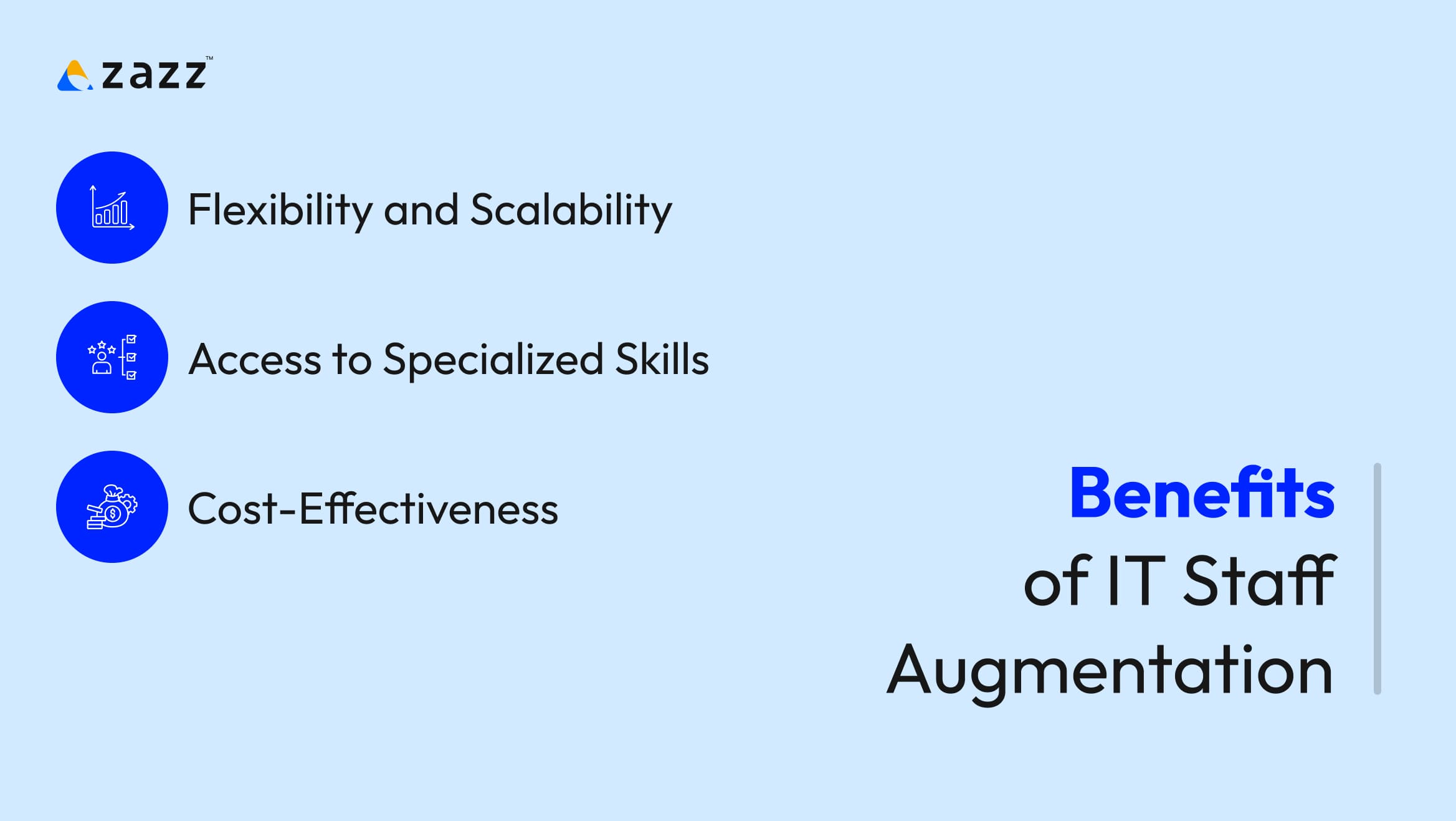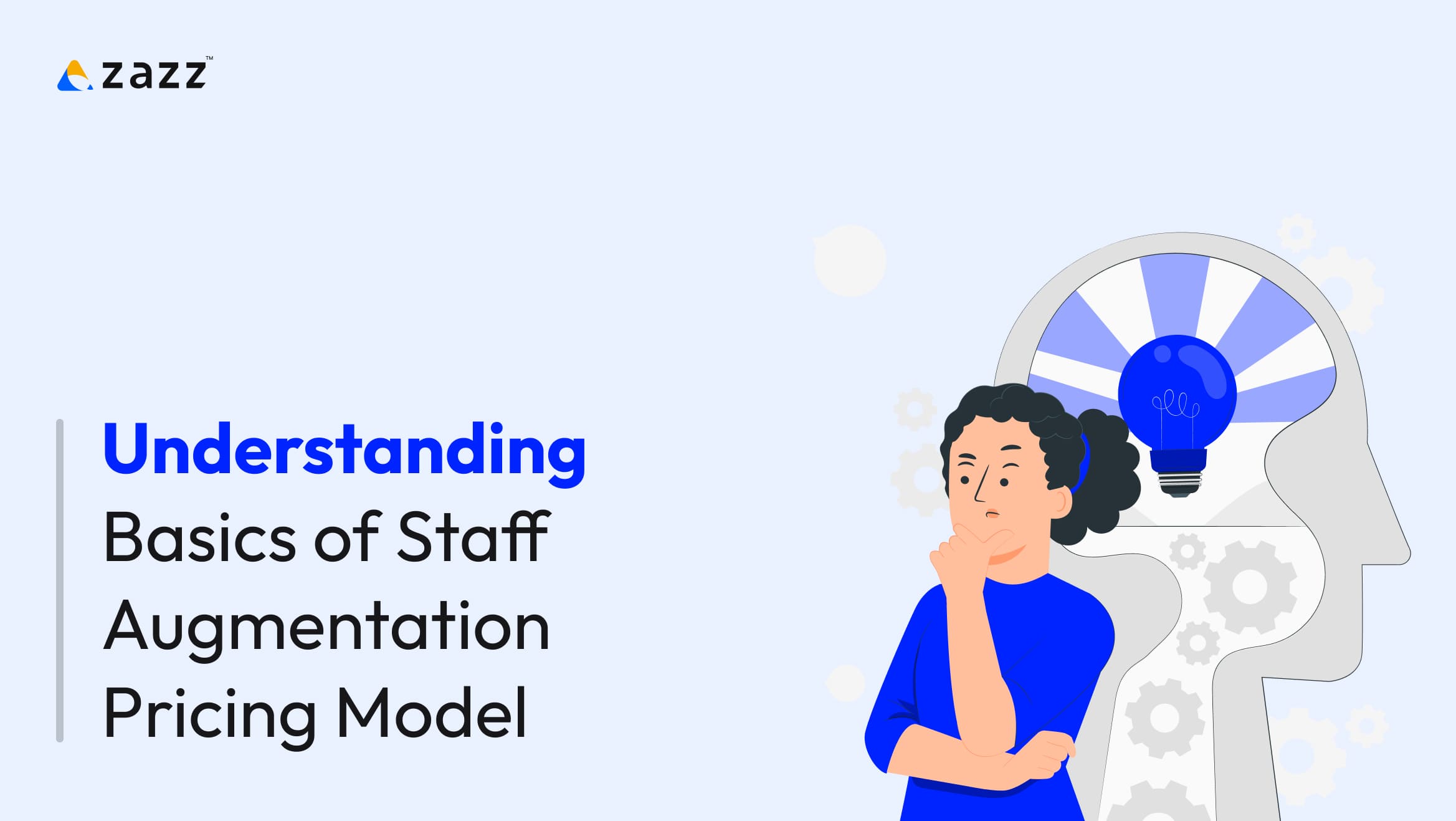
Are you struggling to find the right IT talent while staying within budget? Staff Augmentation is the right solution you can opt for. In this blog, Let’s understand how the staff augmentation pricing model works, how to leverage it effectively and make it beneficial for your business.
Staff Augmentation- An Overview
The staff augmentation model involves temporarily hiring professionals from resource vendors who already have the talents you need in place, helping you meet your project or skill requirements. This approach offers you a high degree of flexibility, allowing you to scale your workforce according to project demands without the long-term commitments that come with permanent hires.
By adopting this model, you can tap into a global talent pool, bringing in professionals with specialized skills that might otherwise be inaccessible to your current workforce. This enhances your team’s capabilities and ensures that projects are completed on time and within budget.
Related reading : IT Staff Augmentation Best Practices
Benefits of IT Staff Augmentation

The IT staff augmentation model has revolutionized how companies manage their workforce, especially in the tech industry.
Here’s why this approach is worth considering:
- Flexibility and Scalability
One of the primary advantages of staff augmentation is the flexibility to adjust your team size rapidly based on project needs. This model lets you scale up for major projects and then scale down after completion, giving you the skills needed on time.
- Access to Specialized Skills
This is particularly useful for projects requiring niche technical knowledge or expertise outside your core team’s capabilities. Whether you need to fill gaps in expertise or expand your team’s capacity, staff augmentation allows you to bring in the right talent quickly and efficiently.
- Cost-Effectiveness
Staff augmentation often proves more cost-effective than hiring full-time employees, particularly for short-term projects or fluctuating workloads. Beyond saving on long-term salary commitments, you also avoid hidden costs such as benefits, training, administrative & particularly severance expenses. With staff augmentation, you only pay for the specific expertise you need, for as long as your project requires, minimizing overhead while maximizing flexibility.
Related reading : IT Staff Augmentation Process, Pros and Cons
Understanding Basics of Staff Augmentation Pricing Model In 2024

Types of Staff Augmentation Pricing Models
Selecting the right pricing model can help you make the most of your staff augmentation strategy. Below are some of the pricing models, each with its unique advantages.
- Fixed Price
In a fixed price model, costs are agreed upon upfront, allowing for better budgeting. This model is typically used for projects with a clearly defined scope and timeline. It can be applied on an hourly or daily basis, providing flexibility in terms of payment cycles. The advantage here is cost predictability, ensuring you avoid unexpected expenses during the project.
- Retainer
The retainer model works like a subscription, where you pay a regular fee, either monthly, quarterly, half-yearly, or annually. It is ideal for businesses that require ongoing support over a long period. By securing the required professionals, ensuring they are available when needed, without the costs of full-time employment.
- Project-based
In a project-based model, payment is made based on the completion of the entire project. This model works best for projects with a clear beginning, middle, and end. It gives you cost certainty, as the pricing is agreed upon for the whole project, making it easier to manage your budget and expectations. It’s particularly useful for one-off or short-term engagements.
- Experience-based
The experience-based pricing model adjusts rates based on the level of expertise and years of experience of the professionals involved. More experienced staff typically command higher rates, but their expertise often leads to faster and more efficient project completion. This model allows you to match your project’s complexity with the appropriate level of experience, ensuring you get the quality of service needed.
- Skill-based
In a skill-based model, the cost is determined by the specific skills required for the project. Highly specialized skills generally come at a premium, as they are harder to find. This model ensures you only pay for the expertise you actually need, making it suitable for projects that require niche technical knowledge or specific industry skills.
- Performance
Performance-based pricing ties payments to the achievement of specific goals or milestones. This model aligns the interests of both parties, as the provider is incentivized to deliver results. Payment is made once agreed-upon outcomes are met, ensuring you only pay for successful project completion.
- Hybrid
A hybrid model combines elements of the above pricing strategies, allowing for a tailored approach that fits the specific needs of your project. By mixing fixed-price, experience-based, and performance-based models, for example, you can create a custom solution that offers both flexibility and control.
Knowing the costs associated with staff augmentation is crucial for effective budgeting and resource allocation. These rates can vary based on factors such as location, the specific skills required, experience level, etc.
Here’s a general breakdown of what you might expect to pay in the U.S. market:
Cost of a Junior Developer
Between $15 to $25 per hour.
Junior developers are ideal for tasks that require less experience and can handle basic development work under the guidance of more senior staff. While they may not have the expertise for complex tasks, they are a cost-effective option for routine coding, testing, and maintenance work.
Cost of a Mid-Senior
Between $25 and $45 per hour.
Regular developers bring more experience to the table and can handle a wider range of tasks independently. They are suitable for more complex project components, requiring intermediate-level skills and problem-solving abilities. These professionals can work on both front-end and back-end development, contributing significantly to the overall project.
Cost of a Senior Developer/Tech Leader
Between $45 to $60 per hour.
Senior developers or tech leaders offer extensive experience and leadership capabilities, making them invaluable for strategic oversight and complex problem-solving. They are often responsible for architectural decisions, mentoring junior staff, and ensuring that the project aligns with broader business objectives. Their involvement can significantly enhance the quality assurance and efficiency of the project, justifying their higher rates.
Also note that these rates can fluctuate based on geographic location, with developers in major tech hubs like San Francisco or New York typically commanding higher rates.
Related reading : Guide on IT Staff Augmentation for Businesses
Choosing the Right Staff Augmentation Partner

Partnering with a staff augmentation company can make all the difference when it comes to finding the right talent at the right time.Here are a few things you should consider to choose the right staff augmentation partner for you.
- Access to a Wider Talent Pool
A well-established firm can provide access to a broad network of skilled professionals, increasing the likelihood of finding the right fit for your project. These firms often have extensive databases of pre-vetted candidates, allowing them to quickly match your needs with the right talent. This can significantly reduce the time and effort required to find suitable candidates.
- Streamlined Recruitment
These companies handle the recruitment and vetting processes, saving you time and resources. They assure you that only qualified candidates are presented to you, reducing the burden of not required bulk hiring. Besides, many staff augmentation firms offer ongoing support throughout the project, helping manage the augmented staff and ensuring they remain productive and aligned with your goals.
- Expertise in Management
Staff augmentation firms have experience managing temporary staff, which can be beneficial in ensuring that your augmented team integrates smoothly and performs effectively. They can provide guidance on best practices for onboarding, managing, and retaining temporary staff, helping you get the most out of your augmented team.
- Mitigating Risks
By partnering with a reputable staff augmentation company, you also mitigate the risks of hiring external staff. These firms often provide contractual guarantees, ensuring that if a candidate does not meet your expectations, they can be quickly replaced. This reduces the risk of project delays or budget overruns due to staffing issues.
Related reading : Benefits of IT Staff Augmentation for Enterprises
How to make the most out of Staff Augmentation?
In 2024, the demand for skilled IT professionals continues to rise, making staff augmentation an increasingly valuable strategy.
To get it right, consider the following tips:
- Plan Ahead
Clearly define your project needs, timelines, and budget before engaging with a staff augmentation provider. This will help you find the right professionals and avoid last-minute surprises.
- Choose the Right Partner
Select a staff augmentation firm with a proven track record in your industry. This will ensure that you have access to the best talent and that the augmented staff integrates seamlessly with your team.
- Effective Onboarding
Integrate augmented staff into your team quickly and efficiently. Providing clear instructions, access to necessary tools, and regular feedback will help the augmented staff feel more connected to the project and give their best.
- Monitor and Adapt
Review the performance of augmented staff regularly and make adjustments as needed. This will ensure that you are getting the most value from your investment and that the project stays on track.
Related reading : Staff Augmentation vs Traditional Hiring
Conclusion
Staff augmentation offers a cost-effective solution for IT businesses looking to enhance their capabilities. By understanding the various pricing models and how to implement them effectively, you can ensure you’re getting the most value for your investment. Whether scaling your team for a specific project or filling a temporary skill gap, the right approach to staff augmentation can make all the difference.
Frequently Asked Questions
The staff augmentation pricing model refers to the cost structures used when hiring external professionals on a temporary basis through a service provider. It allows businesses to pay for specific expertise as needed, offering flexibility and control over budgeting by choosing from models like fixed price, retainer, or performance-based.
Staff augmentation helps reduce costs by allowing businesses to hire experts on a temporary basis, avoiding the long-term expenses associated with full-time employees such as salaries, benefits, and severance. Companies only pay for the exact skills needed for specific projects, which maximizes resource allocation and eliminates unnecessary overhead.
There are several staff augmentation pricing models, including:
- Fixed Price: A set cost for the duration of the project.
- Retainer: A recurring fee for ongoing access to talent.
- Project-Based: Payment based on project completion.
- Experience-Based: Costs determined by the expertise of the hired professionals.
- Skill-Based: Pricing dependent on the specialized skills required for the task.
- Performance-Based: Payment based on reaching specific goals or milestones.
- Hybrid: A custom blend of different models to suit unique project needs.
In the U.S., rates typically range as follows:
- Junior Developers: $15 to $25 per hour.
- Mid-Senior Developers: $25 to $45 per hour.
- Senior Developers/Tech Leaders: $45 to $60 per hour.
and the complexity of the required skills.
The staff augmentation model offers several benefits:
- Flexibility: Adjust your team size according to project demands.
- Cost-efficiency: Avoid long-term commitments, paying only for the expertise needed.
- Access to specialized skills: Bring in niche talents quickly.
- Reduced recruitment time: Partnering with an augmentation firm streamlines the hiring process, allowing you to fill roles faster.
To choose the right partner, consider the following:
- Access to a wide talent pool: Ensure the provider can offer specialized talent that matches your needs.
- Industry expertise: Choose a firm familiar with your industry to ensure seamless integration and the right fit.
- Proven track record: Look for client reviews, testimonials, and successful case studies.
- Ongoing support: Opt for a company that offers continuous management and support to ensure productivity and alignment with project goals.
Recent Articles
Table of Content 1. What is the Carnival in Brazil?...
Table of Content 1. What is IT Staff Augmentation? 2....
Table of Content 1. What is Staff Augmentation for App...












